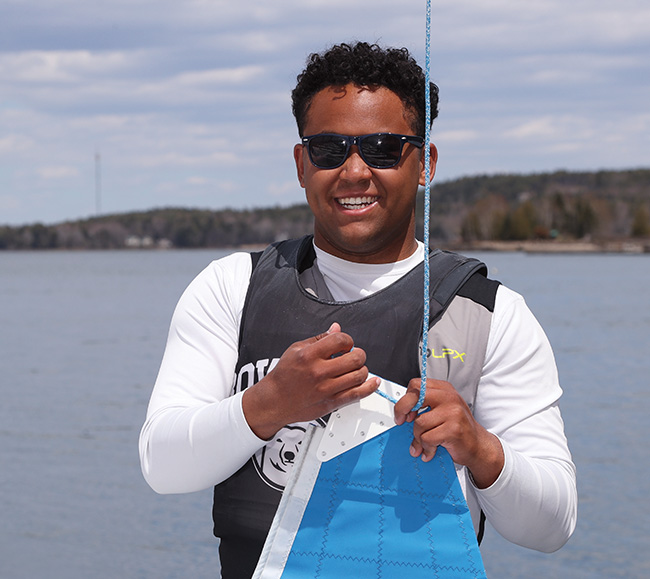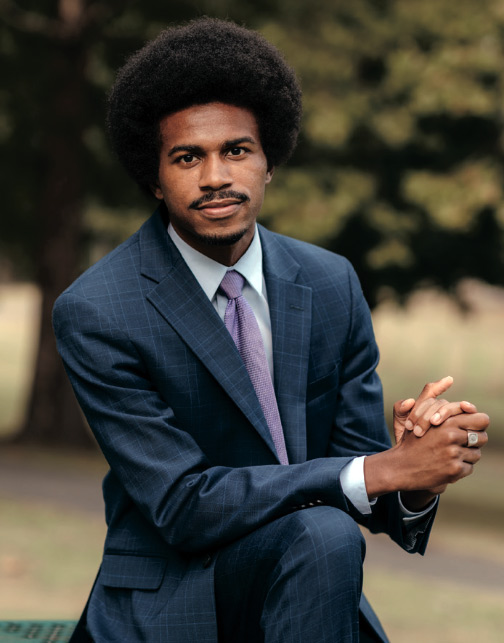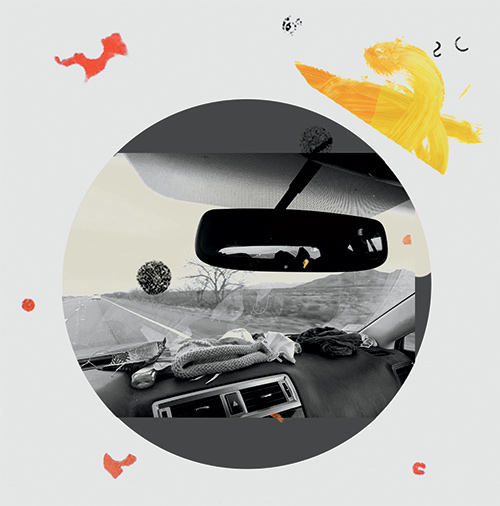Eager Beaver
By Bowdoin MagazineDanny Mejia ’17 set an unsupported FKT (fastest known time) of the 100-Mile Wilderness, often regarded as the wildest sections of the Appalachian Trail (AT). Despite spraining his knee and running out of water with twenty miles to go, Danny finished in 33:18:55, besting the previous record by 53 minutes.
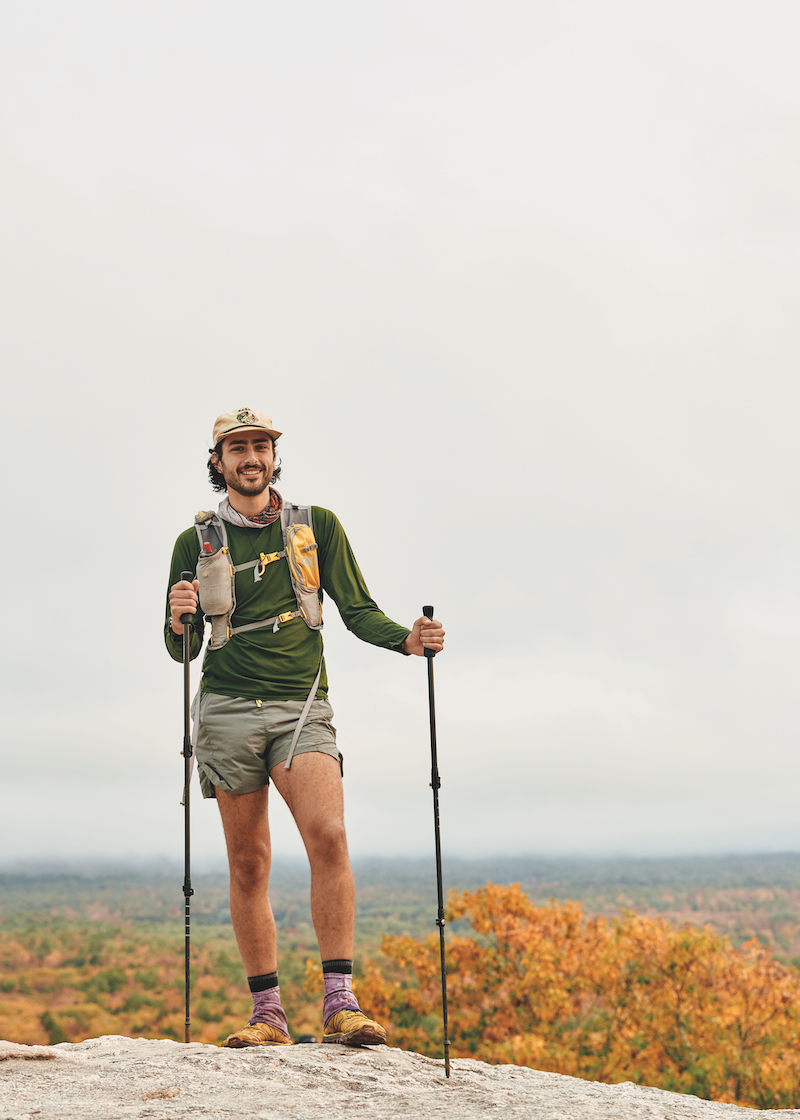
Were you involved with the Bowdoin Outing Club? If so, in what capacity?
Yes, I was somewhat involved. I took leadership training (LT) with the Outing Club the fall of my first year. I knew the outdoors was something I was passionate about going into college, and I had never been in New England prior to visiting Bowdoin, so I was especially excited to explore this region I knew virtually nothing about. After finishing LT, I took the Advanced Winter Leadership Seminar (AWLS) my first-year winter to develop winter camping skills. I also led two orientation trips, both along the Saddleback range in Maine, and worked in the gear room my senior year.
How did you get interested in hiking?
I grew up in Minneapolis and spent the summers of my formative childhood years going to a camp based out of Northern Minnesota. For eight consecutive summers, ages twelve through eighteen, I would travel with other campers and a counselor on a canoeing or backpacking expedition. Each year, the trip would be longer and more difficult than the last, as we would travel to increasingly remote wildernesses. Through backpacking trips in the Rocky Mountains of Montana, the Wind River Range of Wyoming, and Gates of the Arctic National Park in Northern Alaska, I developed my passion for mountains and long-distance wilderness travel.
What prompted your 2018 thru-hike?
I was inspired to thru-hike because of my experience leading an orientation trip for Bowdoin at the beginning of my sophomore year in 2014. The trip I was assigned was along the Appalachian Trail, specifically the Saddleback range. I did not realize when I embarked on that trip that by hiking southbound on the AT in August in Maine, I would naturally be running into a large bubble of thru-hikers coming up from Georgia, with 2,000 miles behind them and less than 200 miles of trail remaining. I became fascinated by their journeys. And I was especially inspired by this one man, whom when I asked how he had enjoyed his trip so far, looked me straight in the eyes and said, “It’s the best thing I have ever done.” I knew after that moment that I would attempt a thru-hike, starting in March of 2018, three-and-a-half years later. I wanted to experience the unadulterated joy of the thru-hikers I met that summer.
What inspired you to attempt a FKT, and of that part of the AT?
Over the course of two thru-hikes, of the Appalachian Trail and Pacific Crest Trail (PCT), I learned that I was a strong hiker. But I never learned exactly how strong I was, or exactly how fast I was capable of moving through the wilderness. When you’re thru-hiking, sustainability is a necessity. You never want to compromise tomorrow’s miles. Every thru-hiker’s worst nightmare is to go too hard or too fast at some point in their epic and to get injured and be forced to give up on their dream. And so, through nearly 5,000 miles hiked over an eighteen-month span, I still felt like I had not found what I was truly capable of if I pushed myself all the way to the limit.
A friend of mine and I always looked at the unsupported FKT of the 100-Mile Wilderness and thought that it was still achievable—still beatable before the elite runners of the world decide it’s a record they want. I decided to make the 100-Mile Wilderness my pet project, to test my limits and find out what I was capable of.
How did you train and prepare?
As I walked through Washington state to finish my thru-hike of the PCT, I became obsessed with the 100-Mile Wilderness FKT and decided no better time than the present to give it my best shot. I had just walked 2,650 miles after all; I figured I must be in peak cardio fitness. Less than two weeks after celebrating my finish of the PCT at the US-Canada border, I found myself at the start of the 100-Mile Wilderness, with no shelter, no sleeping bag, and just enough food for a thirty-four-hour sprint through the woods.
I quickly found out I was not even close to prepared, mentally or physically. My body was used to the gentle grade and smooth trail of the West Coast, and my mind had no idea how to handle over twenty-four hours of stress and sleep deprivation. I bailed after fifty-eight-and-a-half miles.
Through my failure, I learned how to train and prepare for this year’s attempt. I knew my strength was as a quick hiker and not as an ultrarunner, so I decided to focus on becoming a stronger and more proficient runner. I spent the winter and spring fixated on improving my cardio by running six days a week and getting comfortable running on tired legs. And then three weeks before my attempt, I thru-hiked the Long Trail, a 273-mile trail through the Green Mountains of Vermont. The Long Trail is known for its plentitude of rocks, roots, and mud, as well as for the steep grade of the trail—a perfect trail to train for a New England speed record. Along with giving my legs the strength needed for the 100-Mile Wilderness, this final piece of training renewed my confidence in my ability to do hard things.
Equal in importance to my physical training was the mental preparation I focused on this year. I immersed myself in the dominant discourse around FKTs and ultrarunning, learning from books and podcasts about what makes for a successful attempt. I learned about how ultrarunners hone the skills of visualization and dissociation during long races, and I learned about the value in developing a plan to combat the effects of sleep-deprivation. Mentally preparing for this journey is a large part of what set me up for success.
What was your goal time?
My number one goal was to finish, regardless of time. I wanted to finish and be proud of my attempt, even if that meant I was not setting a record. And my number two goal was to beat the unsupported time of 34:11:55.
What was the greatest challenge?
[See Danny’s blog post]
“The climb up Nesuntabunt at mile seventy-eight was one of the hardest climbs of my life. You could have told me the 1,522-foot mountain was a 4,000-footer and I would have believed you. I pushed as hard as I could to keep a half-decent pace on the uphill and drank all of my water knowing there wouldn’t be any good drinking water for another four miles.
Then on the downhill, something changed deep inside my right knee. I wasn’t sure what was happening at first, but taking normal steps was painful. I tried to disassociate, pretending the pain was happening in another realm rather than this one where I still had twenty miles left and was out of water, but the pain became overwhelming. When it would spike, I would throw my body onto the ground, because that move would often hurt less than whatever was convulsing in my knee. During one particularly painful episode, I threw my body onto its left side and popped the two remaining caffeinated gels I had in my left pocket. Now my left leg was coated in a thick slimy layer of double espresso gel. Just a few hours ago, I thought I had this attempt in the bag, and now it felt like my worst nightmare was becoming a reality. I was injured, and the next sixteen to twenty miles were going to be profoundly painful.
At some point in the next few miles, I realized I could tilt my right foot nearly 45 degrees out to the right and walk super duck footed to avoid the knee pain. If the space in front of my heel was a clock, it was like stepping between the one and two for each step. It felt weird to step like this, definitely, but prevented the violent convulsions that were now causing me to yelp in pain when I miss-stepped. I had sixteen miles left, and entirely doubted my ability to walk on this injury, even if I had time to spare on the record. My sixteen- to nineteen-minute miles power walking were now twenty- to twenty-three-minute pained hobbles, but I figured I could still get the FKT with the time I banked in the first seventy miles.
Thirty minutes later, and I couldn’t care less about the FKT. The pain was all-consuming, and I wanted it to stop as soon as possible. I sat for a moment and felt myself falling asleep, and a voice inside my head said bluntly, “Are you dying?” A different voice answered, “No, you’re just falling asleep,” and I woke myself up. I looked on Guthook for any possible escape routes, and there was nothing, so I was stuck with the reality of hobbling out, even if it would take me another four hours to walk the remaining ten miles.
I felt disappointed and sad that all I had worked for, in training and preparation for this attempt, was going to come down to how quickly I could hobble on an injured knee on no sleep. But I had no option. I maneuvered my right leg like a club as quickly as I could up to rainbow ledges. I played favorite albums into my headphones, hoping to provide myself any sense of normalcy or comfort as I struggled forward. Getting down to Hurd Brook was especially painful, as the downhill brought out the worst in the convulsions and the knee was definitely getting worse. But now I only had 3.3 miles remaining to get to the road and had over two hours to do it to break the record. Barring a catastrophe, I could do this thing.
I hobbled and I hobbled some more to the 100-Mile Wilderness sign where my uncle met me and took my photo. Getting to Golden Road, I still had to walk to the middle of the bridge, but at this point I knew I had done it. Tears filled my eyes as I thought about all I had worked toward finally becoming reality, and also from knowing the pain would soon be over. I finished in 33:18:55.”
What was the most satisfying aspect of it?
The end was incredibly satisfying. Getting out of the woods and to Golden Road, I was overwhelmed with emotion. A dream two years in the making had finally become a reality.
What kept you going?
I asked some of my close friends from Bowdoin to record videos of themselves cheering me on or providing motivation and send them to me ahead of time before the attempt. That way I could save the videos to my phone and watch them to help me through some of the darker times while my phone was on airplane mode. The support of my friends and family was always a huge pick-me-up. Also, the bag of Totino's Pizza Rolls I packed for the fifty-mile mark certainly lifted my spirits.
What was the most important item you carried with you? What did you think the most important item would be, if it’s different than what you named?
In terms of non-food items, I would say my trekking poles were probably the most important item I had. I relied on them heavily for the downhill sections, especially after my knee started hurting. I had blisters on my thumbs from holding them so tightly, taking as much load off my knees as possible.
What is your trail name?
My trail name is Beaver. On the Appalachian Trail, I got named one night when I was preparing my dinner. I was making a pepperoni cheddar wrap, and with my hands dirty from a day of hiking, I decided I would gnaw at the block and then spit out the cheese shavings onto the tortilla rather than use my grubby hands. A French woman I was traveling with said, “OH! You are like that one animal? How do you say in English?” Everyone said “Beaver” and it stuck, so I became Beaver for my cheese-gnawing ability.
What are some of your other favorite hikes in Maine? Elsewhere?
Favorite hikes in Maine would include the Saddleback range, the Bigelows, Baldpate, and Katahdin. In New England, I appreciate any hike in the White Mountains, specifically anything above tree line. And out west, I love anything in the Eastern Sierra, the Cascades of Washington, and the Wind River Range of Wyoming.
Any future hiking plans, other FKTs, or other adventure goals?
I have a bunch of hiking plans and adventure goals on the horizon! The biggest adventure plan is to thru-hike the Continental Divide Trail (CDT) sometime in the next few years. The CDT is the third trail of the “Triple Crown” trails, alongside the AT and the PCT. It spans roughly 3,000 miles from Mexico to Canada along the Rocky Mountains.
I also have some smaller projects I want to get after in the next few years. I hope to finish my New England 67, which involves hiking the sixty-seven mountains in Vermont, New Hampshire, and Maine above 4,000 feet. I intend on hiking a ~120-mile section of the John Muir Trail with my mother—a trip we had planned for this summer but had to cancel because of COVID-19. And I’d like to run my first official ultramarathon next summer, and potentially hike the Arizona Trail, which runs 800 miles through the state of Arizona. And, also, I have my eyes set on a few FKT attempts, but I won’t tip my cards just yet!
What other pursuits do you enjoy in your spare time?
I enjoy baking bread, brewing kombucha, watching baseball while drinking a local Portland beer, and listening to music outdoors.
What are you doing for work?
When I graduated Bowdoin, I had ten months before I would start the Appalachian Trail. I decided to move to Portland and work part-time at the Patagonia store in Freeport to learn more about gear and be surrounded by like-minded outdoor enthusiasts, and also decided to work part-time with Maine Boys to Men, a nonprofit I had interned with the summer prior. My role was primarily as a gender-based violence prevention educator, and my work involved teaching a curriculum on consent, healthy relationships, and upstander intervention to middle school-aged boys. I have been with Maine Boys to Men since, and now I work in a full-time capacity as a program specialist facilitating trainings with middle school and high school folks, as well as adults, about how we can create safer communities for all.
How has the current pandemic affected your work and your everyday life?
Working from home every day, my schedule is a bit more flexible than it was prior to COVID-19. There is plenty of work to be done for Maine Boys to Men, but less of it is time-specific with all of our in-person trainings suspended until it is safe again for folks to meet. The flexible schedule has allowed me to prioritize getting outside for runs and hikes on nice days and doing more work in the evenings.
I feel incredibly lucky to be in Maine through this pandemic, with ample access to the outdoors and lots of green space to see friends outside. I have gotten into the habit of watching the sunset each evening at a local park by my apartment—and I find some sense of serenity and connection to nature by doing so. Even when I am living a more sedentary life, finding time and space to connect to nature remains integral to who I am.
Is there anything else you’d like to share?
If anyone reading this is thinking about thru-hiking or a FKT attempt, I can’t recommend it strongly enough. And if anybody wants someone to chat with about an upcoming trip, I’d love to support y’all in whatever way I can! Contact me at dannymejia94@gmail.com.
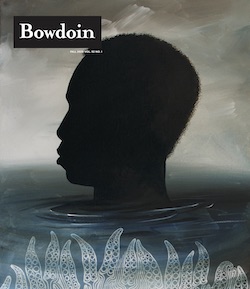
This story first appeared in the Fall 2020 issue of Bowdoin Magazine. Manage your subscription and see other stories from the magazine on the Bowdoin Magazine website.
